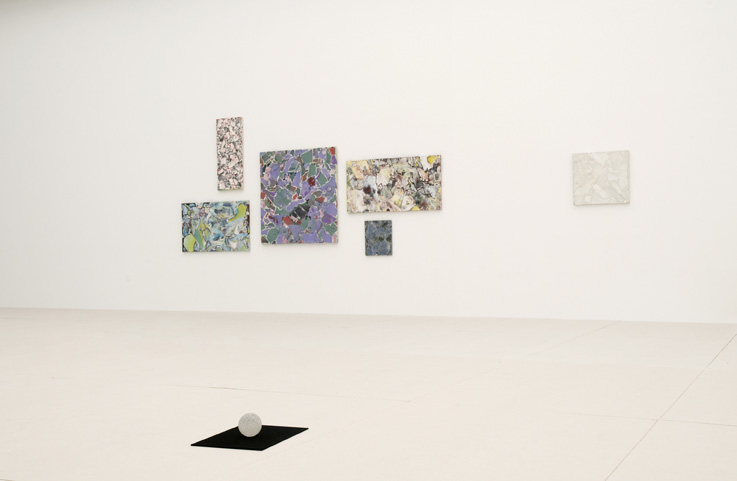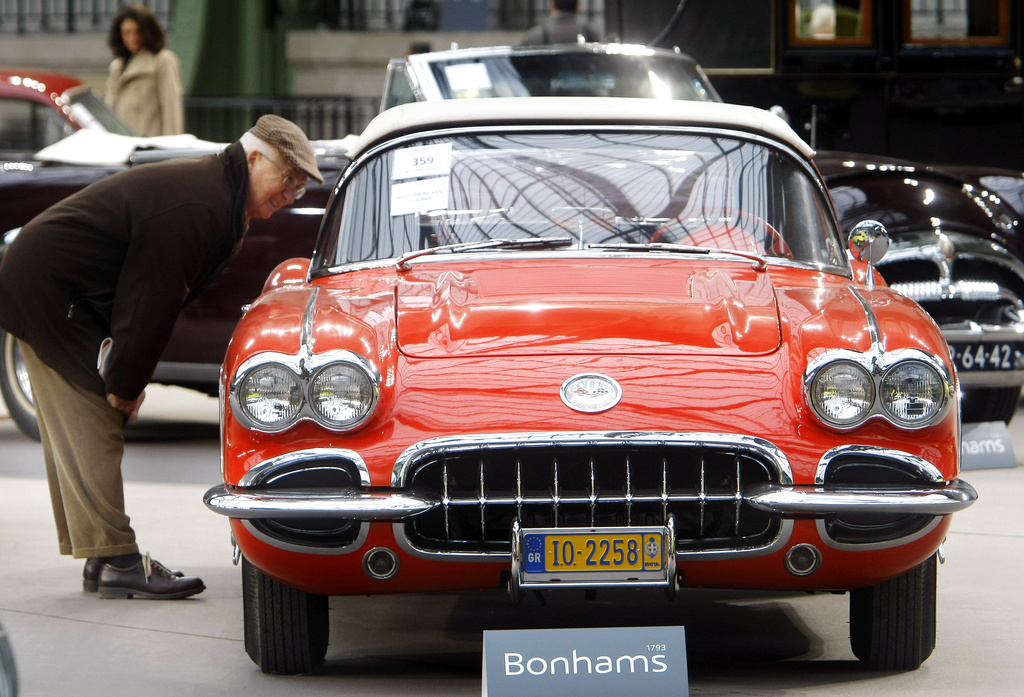Museum drives home the impact of the car

The car has long been romanticised and immortalised by artists who have made it the subject of photos, films and even fetishism.
In its current show, “Car Fetish. I drive, therefore I am”, the Museum Tinguely in Basel has taken a rich, wide ranging look at how 20th century artists captured the advent of the car.
Outside the museum are dozens of parked cars, pointing in the direction of a white screen that partially obscures the building; by night the area is transformed into a drive-in movie theatre.
The car has been widely depicted in films, often iconically. Think Bullitt, Thelma and Louise, Duel, the Blues Brothers or Lost Highway.
The fine arts portray it perhaps less obviously. Whlie few works may spring to mind immediately, many do exist. And for good reason: “The car was the most important possession in 20th century civilisation,” states the exhibition guide, a little provocatively in these times of politically correct environmental views.
“It reflects cultural and social evolution, and not just in the West. A means of transport, in the interaction between man and machine the car is the most important. It also has meaning: individual space, a vehicle for small getaways and greater escapism. It allows man to distance himself and shape his image,” says the exhibition.
Stop and go
On the ground floor, the spacious lobby sets the tone for the show. To your left, dozens of people watch you from their driving seats. Their faces are clear and look posed. But look again and you realise these shots were taken while driving at 50-70mph on United States’ highways. The series of photos, Vehicle Portraits, by Andrew Bush give the illusion of suspended time.
Nearby, Austrian artist Erwin Wurm’s Renault 25 conveys movement. In this exhibit, the visitor sees footage of a car going at full speed. The Renault 25 however is stationary. Strikingly, part of the car morphs into a cartoonish looking shape.
Speed dominates the next rooms. In one, works by Futurist Italian painters Giacoma Balla and Luigi Russolo at the start of the 20th century tried to portray the speed of this new phenomenon.
In a room entitled Speed, photographs embody movement, including a famous shot of British Formula 1 racer Jim Clark driving his green Lotus.
Fetish
Wandering through the numerous rooms and alcoves, the visitor moves through different artistic categories – Futurism, American Pop Art, European Pop Art and New Realism – as well as themes, in particular car fetishes.
Not surprisingly, since the car is usually regarded as a consumer item, it can also be seen as “fetish material”, as witnessed by a video of the Cadillac Ranch – where ten Cadillacs were parked in a field near Route 66 by Ant Farm art collective. Or in Oxford Tire Pile, an alarming image of piles of tyres by Canadian artist Edward Burtynsky.
The car is also, of course, a “sexual fetish” object. Just take Bruno Roussaud’s sado-masochistic steering wheel Ten to two, Swiss artist Sylvie Fleury’s Car Wash video or the Pirelli calendar-style sultry photographs in car workshops by American performance artist and automotive designer Liz Cohen.
More unexpected, perhaps, is seeing the car as a “religious fetish”. On show are a Hummer-shaped coffin, the Danish collective Superflex’s film showing the cremation of a silver Mercedes and the nails used to crucify American performer Chris Burden to a VW Beetle.
Tinguely
Why have the show at the Museum Tinguely? The Fribourg sculptor was a friend of Formula 1 driver Joe Siffert and a serious car enthusiast. He even placed Jim Clarke’s green Lotus in a bedroom at his Neyruz house after Siffert’s death.
Five installations are by Tinguely, combining metal and bone, silence and noise, movement and stillness, life and death.
Some may see the car as an egocentric, polluting consumer good, but as this exhibition shows, there’s more to the automobile than meets the eye.
A sculptor and painter born in Fribourg in 1925.
In 1940 he begins his apprenticeship in painting at the Basel School of Applied Art.
He moves to Paris in 1953 and works with Swiss artist Daniel Spoerri in the studio of Jean Lurçat. He creates sculptures that he powers with motors using recycled materials. His first solo exhibition takes place in 1954 at the Galerie Arnaud in Paris.
In 1955 he participates in group exhibitions, followed by the show, The Movement, organised by the Galerie Denise René in Paris. In 1956, he meets Niki de Saint Phalle, a French artist who becomes his collaborator and wife.
In 1960, Tinguely joins fellow artists Yves Klein, Arman and Raymond Hains in signing a declaration creating the New Realism movement. His career begins to take off, making him one of the biggest Swiss artists of the 20th century.
His moving sculptures evolve increasingly towards complete art works.
Dies in Bern in 1991.
The museum was inaugurated in October 1996.
The building was created and designed by architect Mario Botta.
The permanent exhibition shows Tinguely’s work from its beginnings in the 1950s to the giant sculptures of his last period.
“Car Fetish. I drive, therefore I am “, runs until October 9, 2011.
(Adapted from French by Jessica Dacey)

In compliance with the JTI standards
More: SWI swissinfo.ch certified by the Journalism Trust Initiative






You can find an overview of ongoing debates with our journalists here. Please join us!
If you want to start a conversation about a topic raised in this article or want to report factual errors, email us at english@swissinfo.ch.